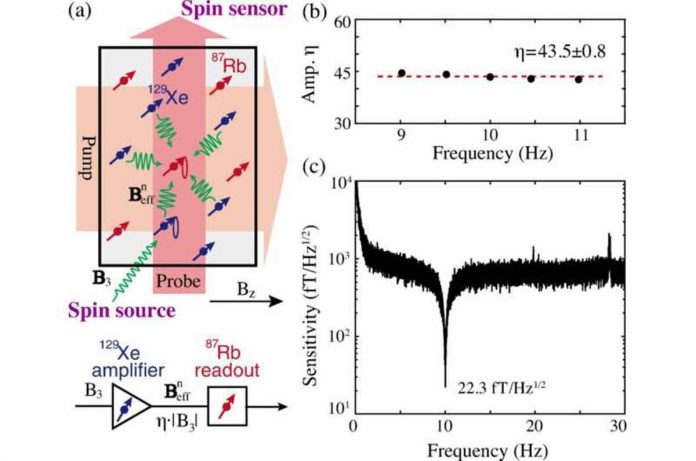Undiscovered axions and axion-like particles may hold the key to explaining some of our universe’s most perplexing mysteries, such as dark matter and charge-parity violation in strong interactions. Several recent theories predict that axion masses will most likely fall within the well-motivated “axion window” (0.01 meV-1 meV). Existing laboratory searches and astrophysical observations, on the other hand, primarily look for axions outside the axion window.
The research team, led by Prof. Peng Xinhua of the Chinese Academy of Sciences and collaborating with Prof. Dmitry Budker of the Helmholtz Institution in Mainz, used a recently developed spin-based amplifier to constrain hypothetical axions within the axion window, allowing them to explore promising parameter space. The findings were published in the journal Physical Review Letters.
The exchange of axions between fermions produces an unusual dipole-dipole interaction, which may be detectable in laboratory experiments. The researchers used a large collection of polarised rubidium-87 electrons and polarised xeon-129 nuclear spins as fermions in this work. The rubidium could generate the exotic signal on the xeon nuclear spins due to axion exchange, and then the polarised xeon-129 nuclear spins are used to resonantly search for the signal.
The researchers demonstrated that the long-lived xeon-129 spins act as a quantum preamplifier, increasing the exotic signal by a factor of more than 40. They used this method to provide the most stringent constraints on neutron-electron coupling mediated by axions for axion masses ranging from 0.03 meV to 1 meV within the axion window.
This paper presents a sensitive quantum technique for realizing indirect axion searches using a recently developed spin-based amplifier, which represents a significant improvement in sensitivity in a theoretically interesting mass region for axions. As a new implementation, the spin-based amplifier scheme broadens the capabilities of spin measurements and can be used to resonantly search for hypothetical particles beyond the Standard Model, such as new spin-1 dark photons.

